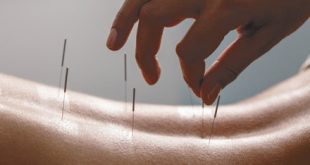By Dr. Michael Shaffer
Did you know that approximately 40% of people will experience sciatica at some point? A startling statistic underscores the widespread prevalence of this often-debilitating condition. Sciatica is clinically called a lumbar radiculopathy. It is characterized by low back pain that radiates down the leg and is a common condition that affects many individuals.
Common Causes of Sciatica:
1. Herniated Discs: When the soft tissue between spinal vertebrae bulges or ruptures, it can compress nerve roots, typically L4 through S1 nerve roots, leading to sciatic pain.
2. Spinal Stenosis: Narrowing the spinal canal can pressure the nerves, causing pain and discomfort.
3. Degenerative Disc Disease: As discs in the spine wear down with age, they may irritate or compress the sciatic nerve.
4. Spondylolisthesis occurs when a vertebra slips out of place and can contribute to sciatic nerve compression.
Symptoms of Sciatica:
1. Low Back Pain: The hallmark symptom is persistent pain in the lower back.
2. Leg Pain: Pain radiates along the path of the sciatic nerve, often extending down a leg.
3. Numbness and Tingling: Individuals may experience numbness or tingling in the affected leg.
4. Weakness: Muscular weakness may be observed, especially in the leg.
Diagnostic Imaging for Sciatica:
• X-ray: This imaging technique provides a detailed view of the bones and can identify issues such as fractures, arthritis, or structural abnormalities.
• MRI (Magnetic Resonance Imaging): It offers a more comprehensive view of soft tissues, including discs, nerves, and ligaments, aiding in the diagnosis of herniated discs or spinal stenosis.
Treatment Options:
1. Conservative Approaches:
• Chiropractic Care: Manual adjustments by chiropractors aim to improve spinal alignment and mobility.
• Acupuncture: Some individuals find relief through acupuncture, where thin needles are inserted into specific points to stimulate natural healing.
• Physical Therapy: Tailored exercises and stretches can improve flexibility and strengthen the muscles supporting the spine, reducing sciatic pain.
• Anti-Inflammatory Medications: Non-steroidal anti-inflammatory drugs (NSAIDs) may be prescribed to alleviate pain and inflammation.
2. Lifestyle Modifications:
• Exercise: Regular, low-impact exercises such as walking or swimming can promote overall spine health.
• Ergonomic Changes: Adjusting workstations or daily activities can reduce strain on the lower back.
3. Epidural Steroid Injections:
• How It Works: Injections deliver corticosteroids directly to the affected nerve root, reducing inflammation and providing temporary relief.
• Effectiveness: Studies have shown that epidural steroid injections can reduce pain for some individuals.
4. Spinal Decompression:
• Mechanism of Action: Non-surgical spinal decompression allows disc bulges or herniations and nutrients to be pulled back into the disc.
• Non-Invasive Nature: Unlike surgical interventions, spinal decompression is non-invasive, minimizing risks and downtime.
• Patient Experience: Patients typically experience a gentle stretching sensation during sessions, finding the procedure comfortable and well-tolerated.
5. Surgery (in Severe Cases):
• Microdiscectomy: A surgical procedure to remove a portion of a herniated disc that may be pressing on the sciatic nerve.
• Laminectomy: Involves removing part of the vertebral bone to relieve pressure on the nerve.
• Effectiveness: Surgical interventions are considered when conservative treatments have not provided relief, and they can be highly effective in some cases.
Michael C. Shaffer, D.C., P.A.
(239) 793-3200
2663 Airport-Pulling Road South, D104
Naples, FL 34122
 Southwest Florida's Health and Wellness Magazine Health and Wellness Articles
Southwest Florida's Health and Wellness Magazine Health and Wellness Articles

